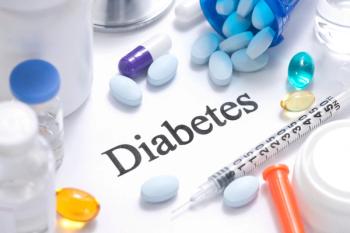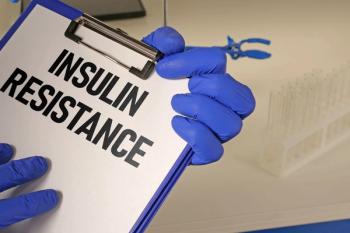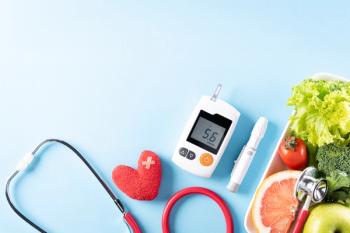
- Drug Topics April 2019
- Volume 163
- Issue 4
Harnessing Technology to Enhance Diabetes Adherence
Increase adherence by matching technology to each patient's unique needs.
Chances are that one in ten people who crossed your path today has diabetes. The
Today there are more tools than ever available to help patients adhere to their medication regimens and manage their diabetes, but education is still key to maximizing the benefits.
The Role of Diabetes Technology
In light of the increasingly important role that technology plays in diabetes management, the 2019 edition of the American Diabetes Association’s (ADA’s) annual Standards of Medical Care for Diabetes has consolidated information that had been spread throughout the standards. It is now in one dedicated section on diabetes technology, says Joshua J. Neumiller, PharmD, CDE, FASCP, chair of the professional practice committee of the ADA, which develops these standards. The section now focuses on use of insulin syringes versus pens, continuous glucose monitors (CGMs), and insulin pumps, but Neumiller anticipates it will evolve to include other things like apps and other technologies.
According to Jennifer Trujillo, PharmD, CDE, BC-ADM, ambulatory care pharmacist at the University of Colorado Center for Adult Diabetes Care and Research, CGMs, which measure glucose taken from interstitial fluid at five-minute intervals, have been a huge game changer for patients, particularly those with type 1 diabetes (5% of people with diabetes, according to the CDC), helping them with their decision-making about bolus insulin doses.
Read More:
Real-time CGMs show glucose trends over the last eight hours, display trend arrows that show patients how quickly glucose levels are increasing or decreasing, and alert patients when their blood glucose is falling, which can be a lifesaving feature, says Trujillo.
The Dexcom G6 is a big advancement over older devices, as it can be worn for 10 days, does not require calibration using glucometers, and can interface with smart devices, sharing data with up to five devices, she says. “Parents can look at their phone and know what their child’s blood sugar is and how it’s trending.”
Intermittently scanning or flash CGMs such as the Freestyle Libre, which are less costly than real-time CGMs, require a device to be waved over them to display data from the last eight hours, Trujillo says. Because they do not provide alerts about dropping blood glucose, Trujillo says, flash CGMs may be more appropriate for patients with type 2 diabetes. “Data is power,” she explains. The CGMs “can tell patients what their glucose level is doing all the time, instead of just a couple of independent moments throughout the day.” This enables patients to see how their glucose is impacted by food, exercise, or skipping an insulin dose, she says.
Regardless of which device is used to monitor blood glucose, it is crucial that patients be taught how to use the information they get, says Candis M. Morello, PharmD, CDE, FASHP, director of the Diabetes Intense Medical Management Clinic at the Veterans Affairs San Diego Health System. “We teach them how to use them appropriately so they can learn what their numbers mean and then what to do about them,” she says, “and that always helps adherence.”
Another huge area where technology can aid diabetes management is the plethora of apps that help with carb counting, insulin dosing calculation, healthy eating, setting and meeting fitness goals, maintaining glucose logs, tracking lab data, and more, reports Trujillo. The challenging part is keeping track of new apps since this changes so fast, Neumiller says.
Insulin Delivery
“Everyone has different barriers for adherence,” says Jennifer Smith, PharmD, ambulatory care clinical pharmacist at the Department of General Internal Medicine, University of Pennsylvania Health System, “but one of those barriers tends to be remembering to inject themselves and making sure they have the supplies that they need at the time, so insulin pumps and continuous delivery devices can definitely help improve adherence, which therefore improves glycemic control overall.”
There are several continuous subcutaneous insulin injection devices or insulin pumps on the market, which deliver basal insulin throughout the day and boluses as instructed by the user. “No one pump is better for everybody,” Neumiller says. Choosing the right pump for each patient involves looking at the options and deciding which is most appropriate. An important safety feature of some pumps is that, when used in conjunction with a CGM, there is a threshold suspend feature so the pump stops insulin delivery if blood glucose levels drop below a predetermined level, Neumiller explains.
Another option for type 2 diabetes patients, according to Morello, is a wearable insulin delivery system (V-go) that is worn as a patch for 24 hours and delivers continuous preset basal insulin and on-demand bolus dosing by pushing a button at mealtimes. “We’ve found that patients using the V-go have had better A1c control and sometimes even with less insulin,” Morello reports. She has also found inhaled insulin (Afrezza) for prandial use to be helpful for adherence, especially in patients who would be frustrated carrying insulin injection supplies.
Afrezza is approved for both type 1 and type 2 diabetes, but is only useful for patients who need lower doses of insulin at mealtimes, she says. For patients using multiple daily injections of insulin there are now vials and insulin pens that keep track of when and how much people are injecting, which can be invaluable in assessing adherence, Neumiller says.
The next level of CGM and insulin pump connectivity is an artificial pancreas. In a hybrid closed-loop system, the insulin pump communicates with the CGM and adjusts the patient’s basal insulin infusion rate based on the CGM data. The first and only available hybrid closed-loop system, Medtronic’s Minimed 670G, has an automatic mode in which it adjusts the basal insulin dose every 5 minutes based on CGM values, suspends insulin up to 30 minutes before glucose levels reach a preset low, and restarts insulin once glucose levels recover. Patients must still initiate bolus insulin doses at mealtimes.
Many manufacturers are working on similar devices, Neumiller says. “We’re moving closer and closer all the time to a fully automated artificial pancreas,” he says.
Changing Recommendations for Type 2 Diabetes
The landscape of type 2 diabetes treatment has been transformed by two new major drug classes: sodium-glucose cotransporter type 2 inhibitors (SGLT2 inhibitors) and glucagon-like peptide-1 receptor agonists (GLP-1 RA), Morello says. SGLT2 inhibitors are oral drugs that work by reabsorption of glucose via the kidneys so that excess glucose is excreted through the urine, while GLP-1 receptor agonists are injectable drugs that help the body release insulin.
“Their overall profiles are very positive,” reports Trujillo. “They lower glucose, they reduce weight, they do not cause hypoglycemia, and they have shown positive results in cardiovascular (CV) outcomes trials, so they reduce the risk of heart attacks, strokes, and CV-related mortality in patients who have established CV disease.”
New Approval:
Both drug classes also slow the progression of chronic kidney disease and the SGLT2 inhibitors also reduce heart failure (HF) exacerbations, Trujillo says.
In light of all this, the ADA’s standards now recommend that patients who fail to meet glycemic goals on metformin monotherapy and have comorbid atherosclerotic CV disease, HF, or kidney disease be treated next with an appropriate drug in the SGLT2 inhibitor or GLP-1 RA classes, Neumiller says.
Additionally, patients that fail combination oral therapy are now advised to consider a GLP-1 RA as the first injectable, he says, as it has some advantages over insulin, including weight loss potential and lower hypoglycemia risk.
In addition to side effect profiles that guide drug choice, a major difference between these two drug classes is their route of administration. Some patients prefer once-a-day oral SGLT2 inhibitors because they are fearful of injectables, reports Smith, but the fact that some of the GLP-1 RA are once weekly injections can sometimes win them over. Morello agrees. “If I can convert them to something that they’re taking four days a month, that’s exceptional at improving the quality of life, they feel happier, and their diabetes control is able to be achieved.”
On the other hand, Neumiller notes, some patients do better with the routine of a daily medication rather than remembering to take a once-a-week drug. He also points out the importance of making sure patients are capable of preparing any injectable drug they are prescribed.
The Pharmacist’s Role
With so many drugs and devices available, why are so many patients still suffering the sequelae of poor glycemic control? There are many barriers. Pharmacists play an important role in helping patients overcome them.
Factors like a patient’s belief about medications and financial problems are huge influences on adherence, says Smith. “A lot of patients are resistant to take meds due to side effects, not understanding how they work, not understanding how they impact the disease states,” she says, “but I think because we have more knowledge of those medications we can definitely help alleviate a lot of their concerns.”
Read More:
Trujillo’s clinic has a new initiative to identify patients who are struggling with medication costs. “Once you’ve identified those patients you can go down the path of helping them come up with treatment options that are not as expensive,” she says. “Pharmacists really have to step up and be able to navigate that world of insurance coverage, cost savings cards, issues with Medicare and the doughnut hole, Medicare Part D, all of those issues that really impact patients in terms of cost.”
Pharmacists are the frontline healthcare providers, says Trujillo, who are easily accessible to patients. “They can help patients a lot just by listening to what their problems are and helping patients troubleshoot them, which could mean really being a jack-of-all-trades and being well-versed in a lot of different areas related to diabetes.”
The question pharmacists can help patients answer, says Morello, is “How can I manage diabetes and make it fit in my life so that diabetes is not managing me, I’m managing the diabetes?”
Resources for More Information
Lists of Diabetes Apps
Articles in this issue
over 6 years ago
Profiles of Four Travel Health Clinicsover 6 years ago
Prucalopride Approved for Idiopathic Constipationover 6 years ago
Clinical Pharmacists Are Integral Team Members in PCMHsover 6 years ago
Four Strategies for Reacting to Rude Customersover 6 years ago
Resources for Getting Started with Telepharmacyover 6 years ago
Telepharmacy's New Frontiers Expand Business Opportunitiesover 6 years ago
Bayer, J&J Pay $775 Million in Xarelto LawsuitsNewsletter
Pharmacy practice is always changing. Stay ahead of the curve with the Drug Topics newsletter and get the latest drug information, industry trends, and patient care tips.





















































































































































